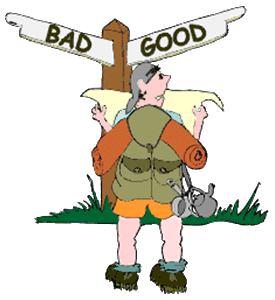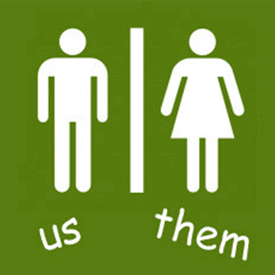Most of us like to think that we’re in complete control of our actions. We picture ourselves as rational beings capable of making the right choices at the right times for the right reasons. But as Dr. Robert Sapolsky writes in Behave: The Biology of Humans at Our Best and Worst, many factors influence the biology of behavior, some of which operate below conscious awareness.
Sensory input impacts our thought processes. For example, if we’re cradling a warm drink, we think warm thoughts about others. By contrast, cold drinks elicit a more frosty assessment. And if we’re in pain (or even really hungry), we’re more apt to be aggressive.
 Rapid response brain regions impact our decisions and behaviors. The amygdala perceives sensory data through the lens of fear, uncertainty, and doubt. It evokes action to keep us from harm’s way and injects distrust and vigilance into decision processes. The hippocampus provides assistance by retaining information related to amygdala activity, thereby speeding response the next go around. They’re great defenders for real and present dangers; they’re troublesome for recovery from ingrained prejudice or past trauma (e.g., PTSD).
Rapid response brain regions impact our decisions and behaviors. The amygdala perceives sensory data through the lens of fear, uncertainty, and doubt. It evokes action to keep us from harm’s way and injects distrust and vigilance into decision processes. The hippocampus provides assistance by retaining information related to amygdala activity, thereby speeding response the next go around. They’re great defenders for real and present dangers; they’re troublesome for recovery from ingrained prejudice or past trauma (e.g., PTSD).
Hormones affect our perceptions and behaviors. For example, testosterone has been correlated with confidence, optimism, and aggression while decreasing fear and anxiety.
Neuropeptides (oxytocin and vasopressin) promote pair bonding and stimulate paternal/maternal behavior. While they elicit charitable behavior toward other members of our group, they increase aggression toward strangers when protecting loved ones.
The dopaminergic system regulates the pleasure center. In a healthy individual, it confers a sense of satisfaction in goal-directed behavior that anticipates future reward. Unfortunately, over-to-top sources of reward (e.g., sugar, alcohol, drugs, gambling) engender cravings, addiction, and habituation. The more we take in, the more we want.
The frontal cortex provides cognition, working memory, emotional regulation, rational decision making, and long-term planning. It’s the area of the brain that is least influenced by genetic inheritance and most sculpted by experience. It has the capacity to interpret sensory and emotional inputs and modulate our responses. For example, amygdaloidal neurons may fire in response to perceived threat, but the frontal cortex has veto power if it thinks the stimulus isn’t scary. That being said, the amygdala tends to carry the day for split second decision making; the frontal cortex requires deliberation.
As cognitive load on the frontal cortex increases, people become less empathetic, charitable, and honest. They’re more likely to succumb to temptation or make rash decisions. Habit formation proves an effective counterweight. It reduces cognitive load by rendering behaviors automatic. Other tactics for avoiding temptation include distraction (drawing one’s mind away from the stimulus) and reappraisal (changing the narrative of what’s happening in the moment). By contrast, good old fashioned willpower increases cognitive load.
Finally, culture exerts a profound impact on how we think and behave. Collectivist cultures emphasize harmony, interdependence, and conformity; individualist cultures stress autonomy, personal achievement, and individual rights. Stratified cultures (e.g., unequal incomes) foster more violence and less trust and kindness. Urban dwellers tend to have more reactive amygdalas, causing heightened fear and anxiety.
The biology of US versus THEM struck me as one of the more fascinating topics in Dr. Sapolsky’s book. We are biologically wired to process differences in race, ethnicity, gender, social status, and beauty. Our brains are especially attuned to skin color. We form US-THEM dichotomies within milliseconds of exposure to other human beings. Dress, ornamentation, and regional accent augment the visual cues as markers of values, beliefs, and ideologies. We feel a sense of obligation and reciprocity toward those we deem part of US, and we’re more likely make amends to those within our group. THEY can be viewed as threatening, angry, and untrustworthy. THEY might even evoke disgust.
 We all belong to several US-THEM groupings, and our affiliations vary over time. Yet we do not need to be held hostage to our biological or cultural biases. If we acknowledge that factions exist, we can choose to follow our better angels. We can focus on larger, shared goals. We can invest the time and effort to “walk in someone else’s shoes” and see the world from a different vantage point. And we can stop, question, think, and reason when confronting engrained biases.
We all belong to several US-THEM groupings, and our affiliations vary over time. Yet we do not need to be held hostage to our biological or cultural biases. If we acknowledge that factions exist, we can choose to follow our better angels. We can focus on larger, shared goals. We can invest the time and effort to “walk in someone else’s shoes” and see the world from a different vantage point. And we can stop, question, think, and reason when confronting engrained biases.
It takes more cognitive load to empathize with people with whom there is less common ground. Social competency demands more processing cycles in the frontal cortex. Yet sustained contact among groups decreases prejudice while increasing knowledge and empathy.
The good news: We make neurons throughout our lives, and our neurons regularly remap. So even old dogs can learn new tricks!